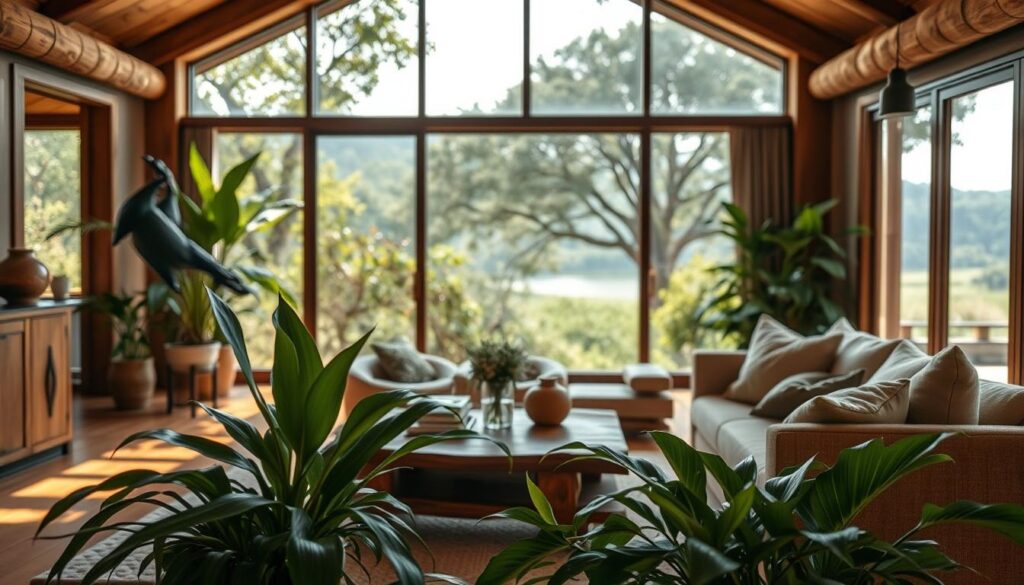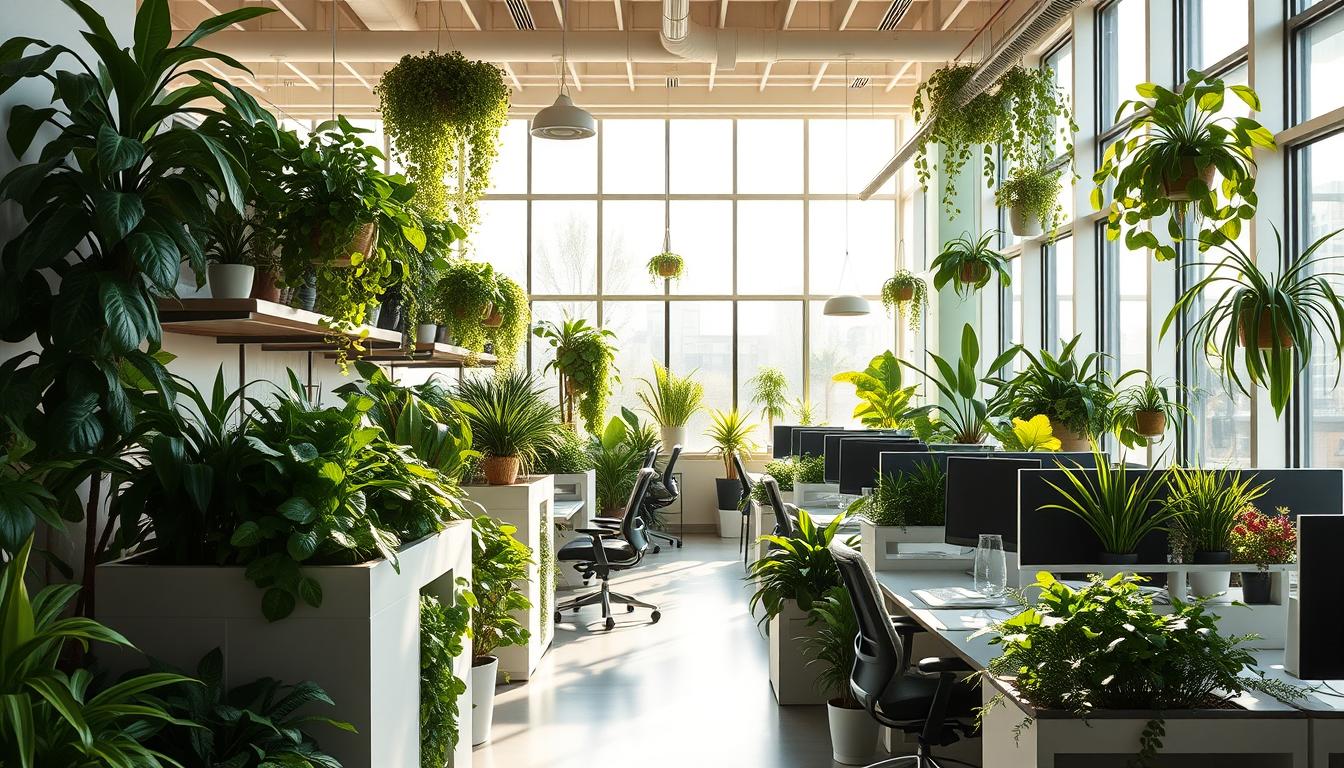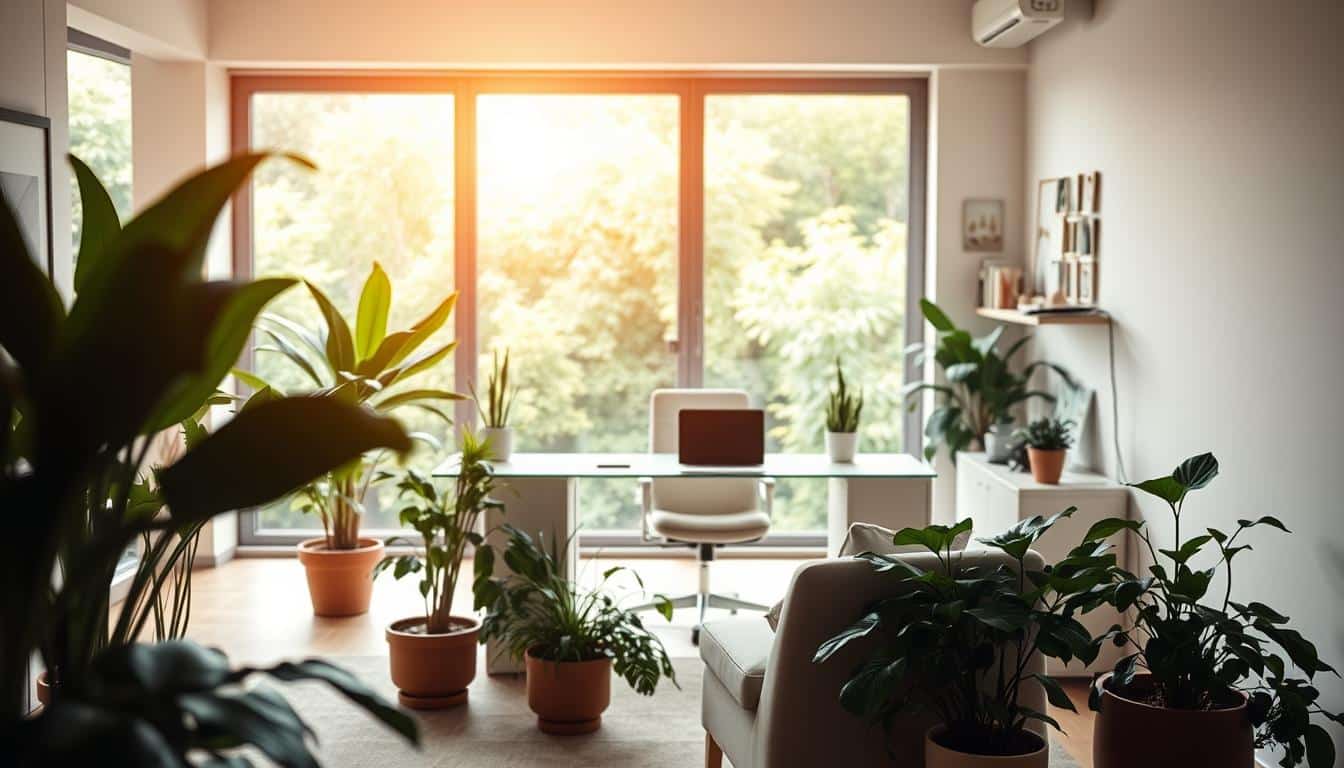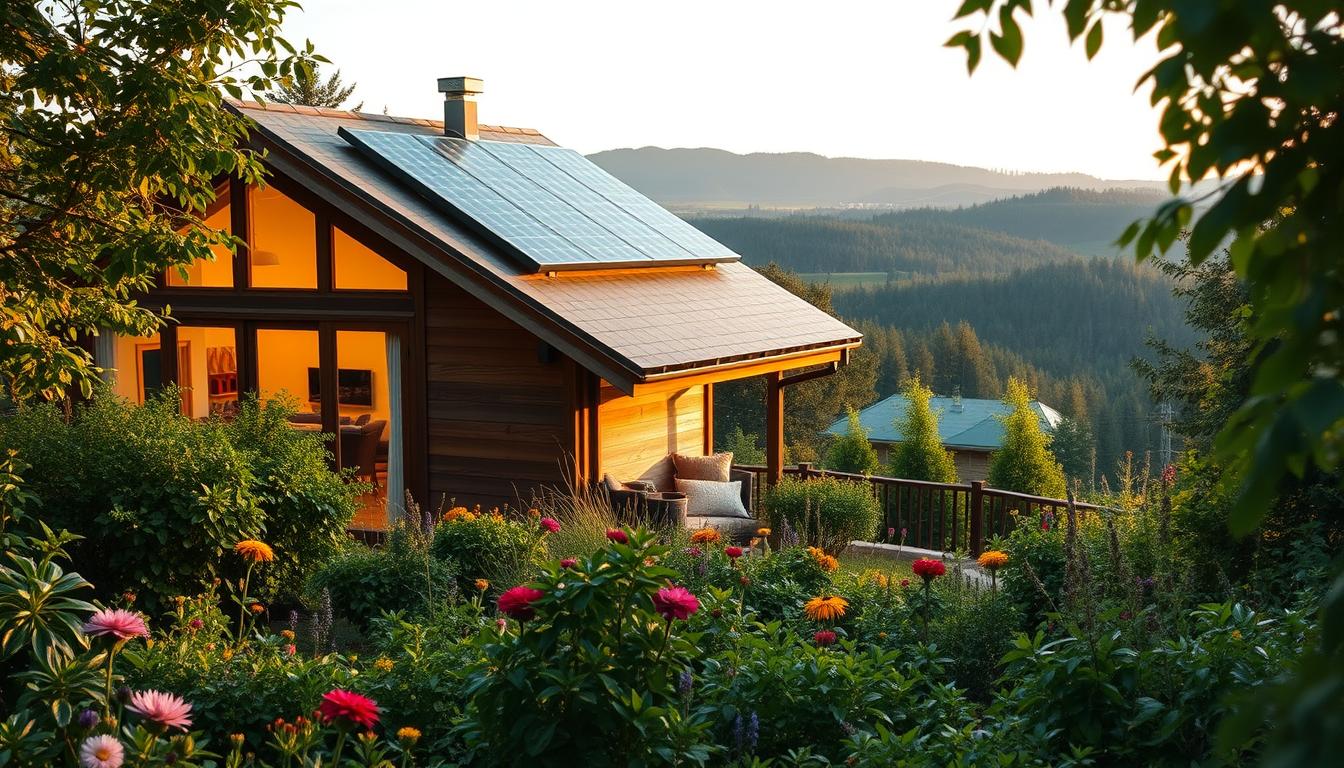As cities grow rapidly in the U.S., finding new ways to boost our wellness is critical. Biophilic immersion creates special areas filled with nature, helping our minds and bodies. This article digs into what biophilic design is all about.
We’ll see how it strengthens our bond with nature and improves our health. By looking at examples and studies, we reveal how smart design lowers stress and increases wellness.
Understanding Biophilic Design
Biophilic design focuses on bringing nature closer to us in the places we live and work. It uses natural elements in building designs to make spaces feel more comforting, like the outdoors. This method not only makes places look good but also helps us feel better and less stressed.
Studies have found that being in spaces with biophilic design improves our mood and how we think. It’s all about creating environments that feel in tune with nature. These places don’t just look nice; they make us feel safer and more relaxed, boosting our health and how well we work.

The Science Behind Biophilic Immersion
Biophilia means we naturally love nature. Science backs this up, showing the good it does for our minds. When people spend time outside, they feel less stressed and happier.
Edwards O. Wilson spoke about our need to be close to nature. He said bringing nature into our lives makes us strong mentally. Looking at trees and water can help our brains rest and be more creative.
We need to understand how nature helps us to use its benefits. By adding nature to places we live and work, we can heal. Not just on the outside, but inside too.
Biophilic Immersion in Focused Zones
Immersion spaces are key for improving wellness. They mimic nature, helping people feel relaxed and balanced. By using visuals, sounds, and scents from the outdoors, these rooms are great for various activities.
Concept of Immersion Rooms for Wellness
Immersion rooms bring the outdoors inside. They use natural elements to create a calming effect. People can unwind in spaces that remind them of a forest or the ocean, easing stress and anxiety.
This setting boosts emotional health and promotes a wellness-focused culture.
Benefits of Enhanced Wellness Through Biophilia
Studies show the perks of biophilic immersion. Being in these spaces can make people feel up to 60% happier. They help spur creativity and increase focus, making one more productive.
Natural light and greenery also improve indoor health, leading to better physical well-being.
Importance of Connecting with Nature
Urbanization often pushes us away from nature. This can really affect our mental health. People living in cities usually feel more stressed and anxious. This is because they have less access to green spaces. It’s very important to connect with nature to improve our mental health and happiness.
Nature offers a peaceful escape that helps our minds bounce back and grow stronger. By adding more natural elements to city life, communities can help people feel better emotionally. Making sure people can get to nature easily is good not only for them but also helps everyone feel more connected and happier together.
Elements of Biophilic Design in Indoor Spaces
Indoor biophilic design helps people feel closer to nature. It makes spaces better for well-being using natural light, clean air, and materials like wood. These features not only make rooms look good. They also help people feel healthier.
Incorporating Natural Light and Air Quality
Natural light is key for feeling good indoors. It helps people stay happy and work better. Sunlight also helps keep our sleep cycles on track, which is good for health.
Having clean air is just as crucial. It makes us think clearer and feel less stressed. Big windows, skylights, and open areas help bring in light and fresh air. This improves health.
Utilization of Natural Materials
Choosing the right materials is vital in biophilic design. Natural materials bring beauty and positive health effects. They make spaces feel peaceful and calm.
Studies show that wood, stone, and organic elements can lower stress. They help people relax and feel better. Using these materials makes indoor areas more healing.
Creating Multi-Sensory Experiences
Designing with a multi-sensory approach makes spaces better. It helps people feel more connected to nature. This is key for creating places that make us feel good and work better.
Visual Engagement with Nature
Things like plants and sunlight are important for building immersive spaces. Adding big windows and walls with plants can make a big difference. These features help us relax, think better, and feel less tired.
They make us feel more emotionally connected to our surroundings. This deepens our bond with nature-inspired design.
Auditory Elements to Enhance Focus
Sound design also has a big impact on a space. Soft, natural sounds like water or leaves can help block out distractions. This can help us focus better.
Studies show these sounds lower stress and boost creativity. Paying attention to sound design is essential for a good multi-sensory experience. It helps people feel more engulfed by their environment.
Examples of Successful Biophilic Design
There are many great examples of biophilic design that show its good effects in different places. Apple Park in California is one such place. It has lots of green spaces and sunlight, helping workers feel better and do more. These natural features make a workspace where people can think freely and work together well.
The Bosco Verticale in Milan is another outstanding example. It’s a set of residential buildings with living forests on them. This adds more nature to the city and makes life better for people living there. It makes the city look better, supports green living, and helps balance the environment.
In both hotels and hospitals, biophilic design has shown to be very helpful. Hotels with nature in them help guests relax and feel close to nature. In hospitals, having natural light and greenery around can help patients recover faster and feel better overall.
Integrating Biophilic Design in Workplaces
Putting biophilic design into our work places helps make employees healthier and work better. Offices with nature-like elements seem more welcoming. This boosts how happy employees are at their jobs. Studies show having nature around at work makes people more productive. It also means people miss work less.
When companies choose biophilic design, they see big rewards. Their workers are healthier and perform better. To really get this right, businesses should:
- Maximize natural light throughout office spaces to enhance mood and energy levels.
- Utilize greenery, such as potted plants or living walls, to create a calming environment.
- Foster open and airy spaces that encourage collaboration and creativity among teams.
The Role of Immersion Spaces in Healthcare
Immersion spaces play a big role in patient recovery in healthcare places. They make wellness places feel better overall. These areas are made to give a peaceful vibe that helps with healing. Studies show that patients in nature-like spaces heal faster, feel less stressed, and get a mood boost.
Adding green areas, soft colors, and lots of natural light helps with healing. In healthcare design, it’s key to make spaces that help care for the whole person. Having nature in hospitals helps patients get better and keeps healthcare workers happy. This makes these spaces very important in today’s wellness places.
Future Trends in Biophilic Design and Wellness
The future holds exciting things for biophilic design, focusing more on being green and using tech. With cities growing, everyone wants more parks and greenery. This pushes designers to blend nature into our spaces in cool, new ways. These changes help us feel good and make life better.
Tech is getting a big role in making nature more a part of our lives. Think of using virtual reality to make it feel like you’re outside, even in a big city. This can help people relax and feel happier where they live.
We’ll also see more places made to refresh us, putting health first. These spaces fight the downsides of a fast-paced city life. They make us feel better, both in body and mind.
As we learn how much nature helps us feel good, biophilic design will become even more key. It’ll change the way we live for the better.
Conclusion
Being close to nature is key to feeling better, even in cities. We’ve looked closely at how biophilic design helps. It’s all about bringing natural elements into where we live and work. This isn’t just a passing trend. It’s a big step towards a healthier life with nature.
The benefits of connecting with nature are huge. By adding plants, sunlight, or nature sounds, we make our emotions and health better. These natural touches make places beautiful and healing. They create spaces where we love to be.
Understanding biophilic design better means seeing its impact on us and our communities. It’s important to include nature in our spaces. This helps us feel balanced and strong every day. Biophilic design is changing the way we live in cities for the better.



